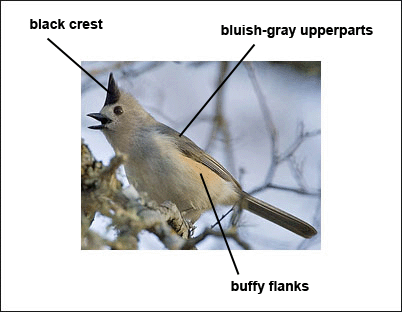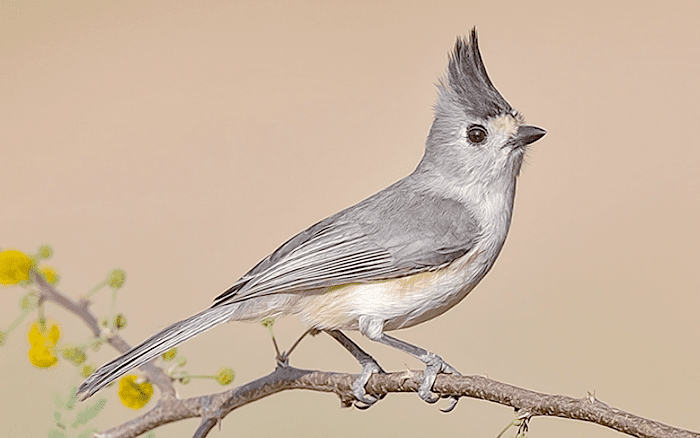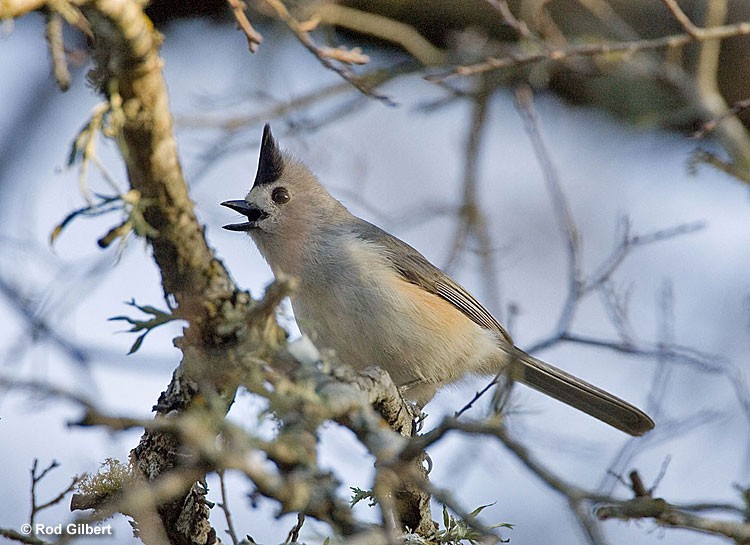Despite hybridization with the Tufted Titmouse in central Texas, differences in genetics and vocalizations as well as in appearance, and a tendency for mating with like individuals resulted in the Black-crested Titmouse gaining full species status in 2002. The Black-crested Titmouse is non-migratory, and reaches the northern extent of its range in southwestern Oklahoma.
Much additional study of the Black-crested Titmouse is needed, but based on information known about the closely related Tufted Titmouse, a typical lifespan is probably about 2 years, with a few individuals probably living well past 10 years of age.
On this page
Description of the Black-crested Titmouse
BREEDING MALE
The Black-crested Titmouse is grayish above and whitish below, with reddish flanks and a black crest. Length: 6 in. Wingspan: 9 in.

Female
Sexes similar.
Seasonal change in appearance
None.
Juvenile
Similar to adults but with less reddish on the flanks.
Habitat
Woodlands and suburban areas.
Diet
Insects, acorns, seeds, and berries.

Photograph © Alan Wilson.
Behavior
Forages in trees.
Range
Resident from southwestern Oklahoma south to Mexico. Population is stable.
Fun Facts
The Black-crested Titmouse was formerly considered to be the same species as the Tufted Titmouse.
The Black-crested Titmouse fights less often than the Tufted Titmouse, relying instead on vocalizations and displays to settle disputes.
Vocalizations
The song is often described as “peter-peter-peter.” A variety of call notes are also given.
Attracting
The Black-crested Titmouse will come to bird feeders for seeds and will use nest boxes.
Nesting
The nest is a cup of hair and plant material placed in a cavity.
Number: 4-7.
Color: Whitish with darker markings.
Incubation and fledging:
– Young hatch at 12-14 days.
– Young fledge (leave the nest) 15-16 days after hatching but remain with the adults for some time.
Bent Life History of the Black-crested Titmouse
See the Tufted Titmouse, the two were previously considered the same species.


